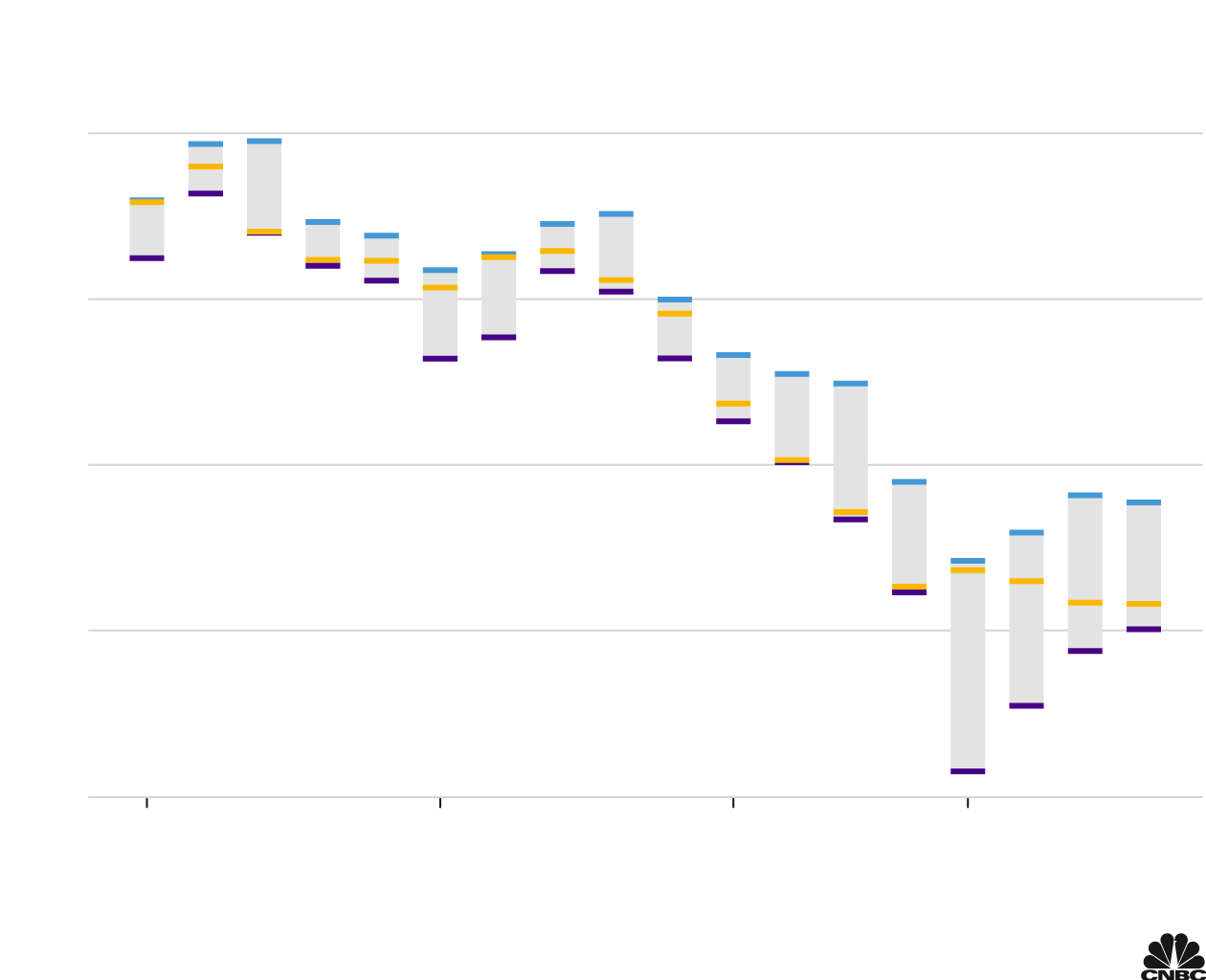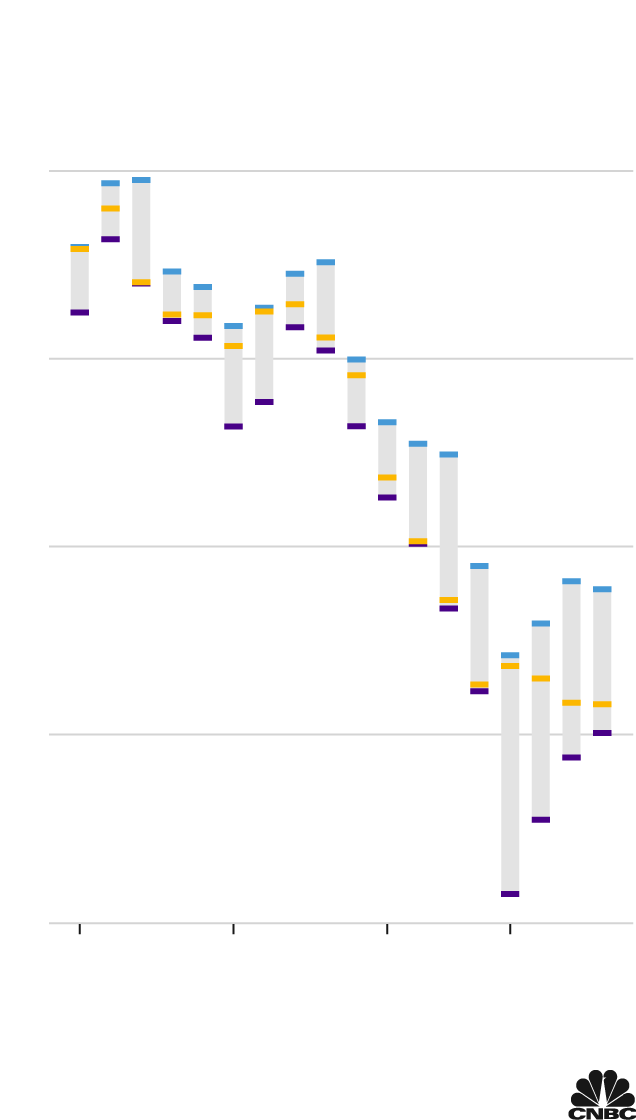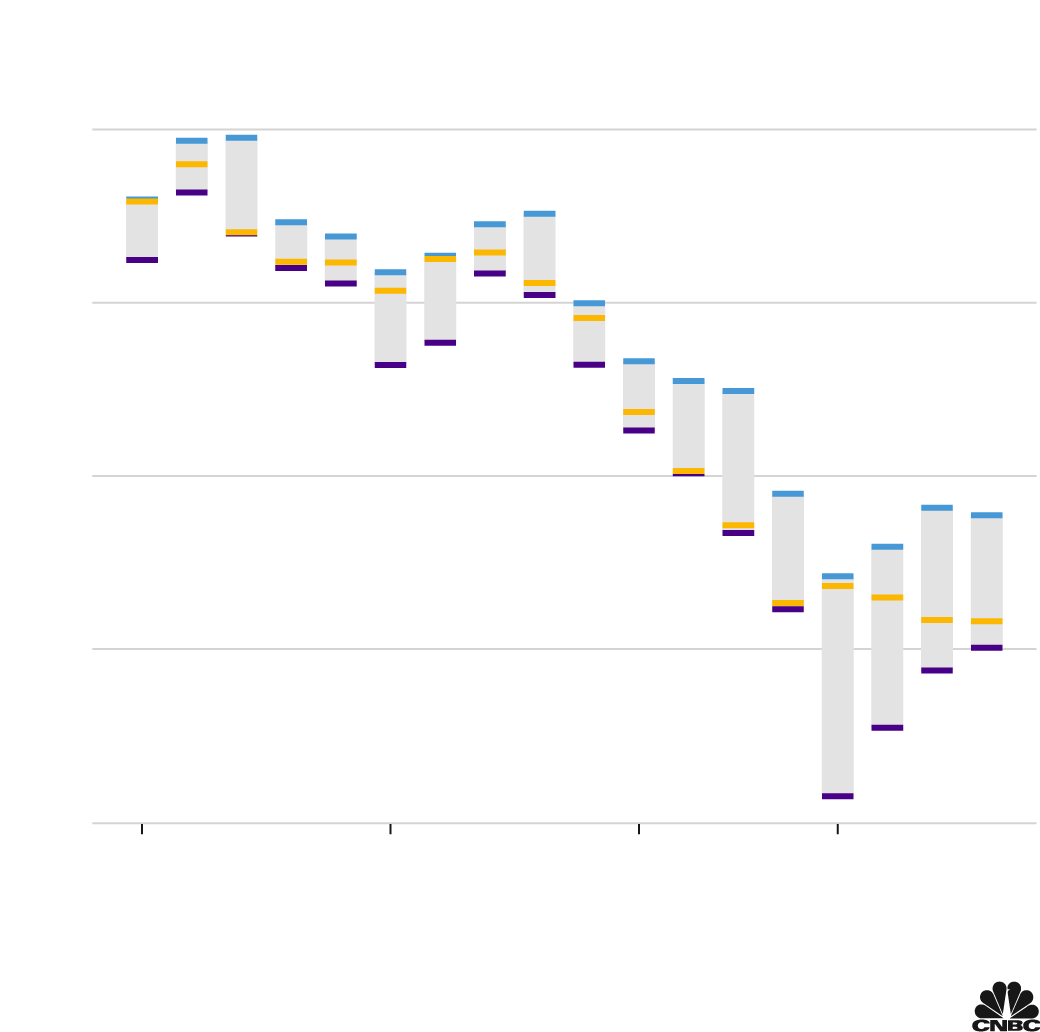Dow futures lose 300 points as worst market sell-off since March 2020 continues
Stock futures dropped Friday as the market looks to wrap up a roller-coaster week with the S&P 500 headed for its worst month since March 2020.
Futures on the Dow Jones Industrial Average lost about 315 points, or 0.9%, after being higher earlier in the session. S&P 500 futures lost 0.9%. Nasdaq 100 futures dipped 0.8%.
The major averages have experienced outsized swings each day this week — including the Dow making up a more than 1,000-point intraday deficit to close higher on Monday for the first time ever.

The Dow’s daily swings
High, low, and closing levels for the Dow Jones Industrial Average
Chart: Nate Rattner / CNBC
Source: FactSet. As of Jan. 27, 2022.

The Dow’s daily swings
High, low, and closing levels for the Dow
Jones Industrial Average
Chart: Nate Rattner / CNBC
Source: FactSet. As of Jan. 27, 2022.

The Dow’s daily swings
High, low, and closing levels for the Dow Jones Industrial Average
Chart: Nate Rattner / CNBC
Source: FactSet. As of Jan. 27, 2022.
The Dow is 0.3% lower on the week. The S&P 500 is down 1.6% week to date. Both indexes are headed for a fourth consecutive losing week. The Nasdaq Composite has dropped 3% this week, on track for its straight fifth negative week.
The S&P 500 finished Thursday off 9.8% from its Jan. 3 record close. The Nasdaq is deep in correction territory, sitting 17.6% below its intraday high.
The Russell 2000, the small-cap benchmark, is in a bear market, down 20.9% from its record close.
With January ending Monday, the tech-heavy Nasdaq is headed for its worst month since October 2008 and worst first month of the year of all time. The S&P 500 is on pace for its weakest month since March 2020 and weakest January of all time. The Dow could see its worst month since March 2020 and worst January since 2009.
The market’s fear gauge, the Cboe Volatility Index, shot up to its highest level since October 2020 earlier this week and has traded above 30.
Investors continued to digest the Federal Reserve’s pivot to tighter policy.
The Fed indicated Wednesday that it likely soon raise interest rates for the first time in more than three years as part of a broader tightening of historically easy monetary policy. Markets are now pricing in five quarter-percentage-point interest rate hikes in 2022, though the long-range expectation for rates is little changed.
“The FOMC meeting did not bring any surprises in terms of monetary policy, however, it may be perceived as more hawkish than expectations owing to Chair Powell’s suggestion of a need to enter a ‘steady’ phase of policy normalization,” Chris Hussey, a managing director at Goldman Sachs, said in a note.
On Thursday, shares of Apple rose about 3% in premarket trading after the company reported its largest single quarter in terms of revenue ever even amid supply challenges and the lingering effects of the pandemic. Apple beat analyst estimates for sales in every product category except iPads.
Chevron shares fell roughly 3% in early morning trading after missing Wall Street earnings expectations. Dow component Caterpillar dipped 2% in the premarket even after it topped profit estimates.
Investors will get an important economic snapshot this morning as the Commerce Department reports December’s personal consumption expenditures price index, which is the Fed’s preferred inflation gauge.
Economists surveyed by Dow Jones expect the PCE measure to show a 4.8% year-over-year gain excluding food and energy, which would be the highest reading since September 1983. The report is due out at 8:30 a.m., the same time the Labor Department releases the employment cost index for the fourth quarter of 2021. The Fed also watches that gauge closely for inflation pressure, and it is expected to show a 1.2% quarterly gain.



